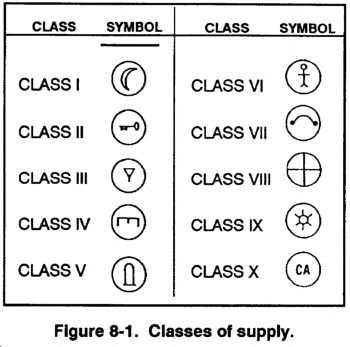
Army Classes of Supply refer to categorizing various supplies and materials required to support military operations.
I will briefly cover the different ten classes of supply and give you a little cheat sheet that you can use as an Army leader to help you deal with logistics and supply adequately.
If you’re a small unit leader, whether you’re an NCO or an Army officer, it’s really in your best interest to have a basic, fundamental knowledge of the different supply classes.
10 Classes of Supply for the Army
The Army has ten classes of supply, each of which has a specific category of items.
These supply classes are important in managing, procuring, storing, and distributing various supplies within the Army and the military in general.
The Ten Army Classes of Supply are as follows:
| Class of Supply | Items |
|---|---|
| Class 1 | Food, rations, water |
| Class 2 | Uniforms, protective gear, tents |
| Class 3 | Fuel, lubricants, hydraulic fluids |
| Class 4 | Sandbags, barbed wire, fencing |
| Class 5 | Ammunition (Guns) & Explosives, |
| Class 6 | Spare parts & Materials for repairs |
| Class 7 | Tanks, aircraft, vehicles |
| Class 8 | Medical materials |
| Class 9 | Spare parts & Material for repairs |
| Class 10 | Items not included in Class I to X |
Class I – Food, Rations, and Water
The Army Class 1 supply list includes MREs, UGR rations, prepackaged meals, snacks, etc., necessary to sustain personnel during operations.
- MREs (Meal Ready-to-Eat)
- UGR Rations
- Prepackaged Meals and snacks
MREs (Meal Ready-to-Eat): These are individually packed meals meant to provide soldiers with all the essential nutrients they require.
UGR Rations: The Unitized Group Ration (UGR) is a self-contained module meant for feeding groups of soldiers.
Prepackaged Meals and snacks: These are essential for shorter operations or soldiers on the move, ensuring they have the energy to carry out their tasks.
The Army’s strength lies not only in its arsenal but also in its ability to sustain its soldiers during operations.
Class 1 supplies are critical as they directly impact the well-being and energy levels of military personnel.
The importance of Class I supplies cannot be overstated. A well-fed soldier is an effective soldier.
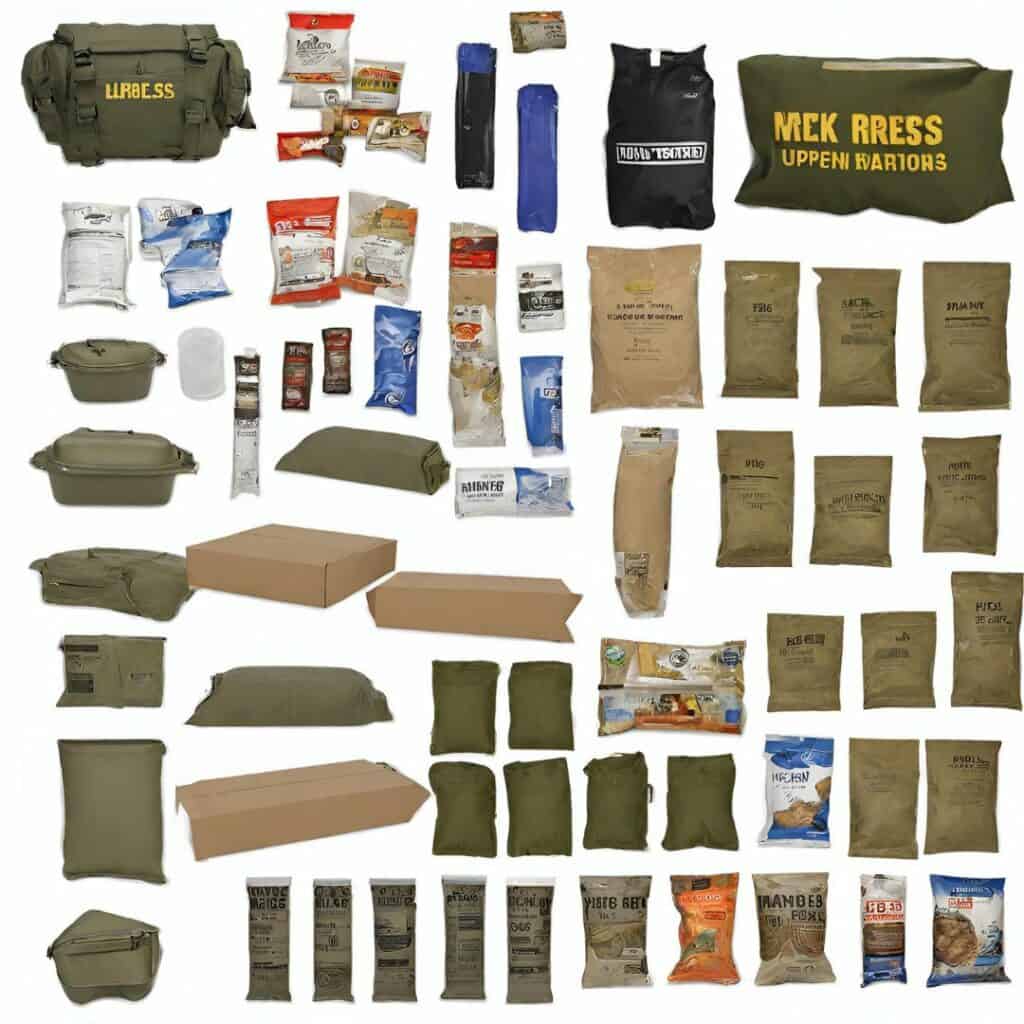
Class II – Clothing and Equipment
The Army Class 2 supply list includes your protective gear, tents, tools, uniforms, unclassified maps, clothing toolkits, hand tools, and individual equipment.
- Protective Gear
- Tents and Shelter
- Uniforms
- Unclassified Maps
- Toolkits and Hand Tools
Protective Gear: This ensures the safety of soldiers against various environmental and combat threats. Examples are helmets, bulletproof vests, and goggles.
Tents & Shelter: Provides temporary housing during field operations or in areas lacking infrastructure.
Uniforms: Beyond identity, a soldier’s uniform is designed for durability, camouflage, and utility.
Unclassified Maps: Essential for navigation and strategic planning during operations.
Toolkits & Hand Tools: For miscellaneous tasks, repairs, and other essential activities in the field.

Class III – Petroleum, Oils, and Lubricants (POL)
The Army Class 3 supply list includes fuel, lubricants, hydraulic and insulating fluids, petroleum, coolants, and any other material essential to operating army vehicles, aircraft, and equipment.
- Fuel
- Lubricants & Coolants
- Hydraulic and Insulating Fluids
Fuel: Powers everything from tanks to helicopters.
Lubricants & Coolants: Essential for maintaining the longevity and efficiency of engines and machinery.
Hydraulic and Insulating Fluids: Necessary for various machines and equipment in the Army
Without these supplies, the Army’s vast array of vehicles and machinery would come to a standstill.

Class IV – Construction and Barrier Materials
This Army Class 4 supply list includes material for barrier and construction projects such as lumber, sandbags, barbed wire, metal fence posts, etc.
- Lumber
- Sandbags
- Barbed Wire
- Metal Fence Posts
Lumber & Sandbags: Fundamental materials for makeshift structures or fortifications.
Barbed Wire & Metal Fence Posts: Used for creating barriers, protecting perimeters, and controlling movement.
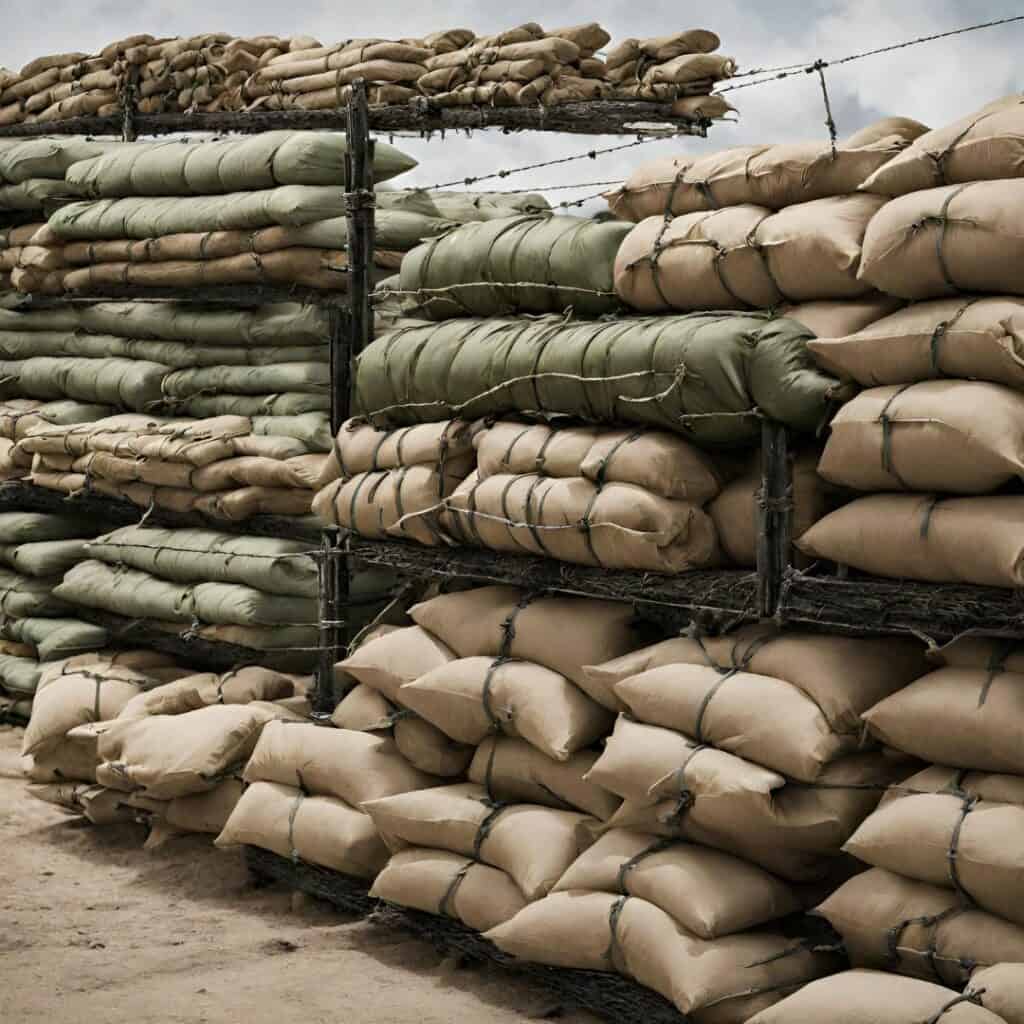
Class V – Ammunition
This Army Class 5 supply list includes all types of ammunition and explosives, such as pyrotechnics, missiles, hand grenades, rockets, bullets, bombs, and any other munitions used by the military.
- Ammunition
- Explosives
- Pyrotechnics
- Missiles
- Hand Grenades
- Rockets
- Bullets
- Bombs
- Other Munition
Ammunition: This category includes various projectiles designed to be fired from firearms. It comprises different types of bullets, shells, and cartridges that are used in rifles, handguns, machine guns, and other small arms.
Explosives: This category includes various types of explosive materials that serve different purposes in military operations. These explosives can be used for demolition, construction, or as weapons.
Pyrotechnics: Pyrotechnic devices are used for signaling, illumination, and other tactical purposes. Smoke grenades, signal flares, and incendiary devices fall under this category.
Missiles: Missiles are precision-guided weapons designed for long-range attacks. They can be air-to-air, air-to-ground, or ground-launched.
Hand grenades: Hand grenades are hand-held explosive weapons that soldiers use to disable or destroy enemy personnel or equipment. They come in various types, such as fragmentation, concussion, and smoke grenades, each serving specific tactical purposes.
Rockets: Rockets are unguided or guided projectiles launched from launchers, vehicles, or infantry weapons. Rockets are used for various purposes, from direct fire support to anti-tank and anti-aircraft operations.
Bombs: Bombs are large-scale explosive devices dropped from aircraft. They are categorized based on their purpose, such as high-explosive bombs, cluster bombs, or precision-guided munitions (PGMs).
Munitions: This category encompasses any other military ordnance and ammunition that may not fall into the specific categories mentioned above.
This includes items like land mines, torpedoes, and other specialized munitions designed for specific military tasks.
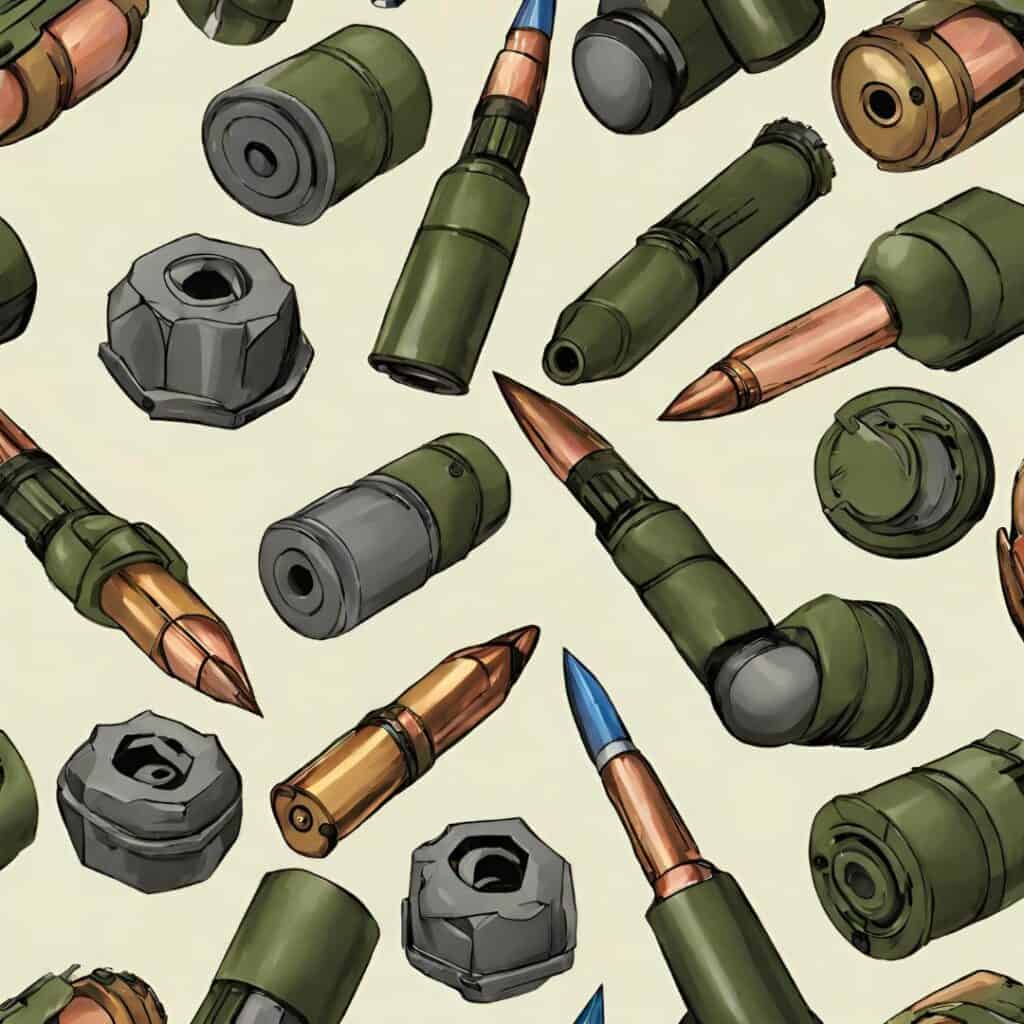
Class VI – Personal Demand Items
This Army Class 6 supply list includes personal items that support the well-being of soldiers, such as hygiene products (deodorant, toothpaste, shampoo, wet wipes, toilet paper, etc.), writing material, snacks, and other recreational items (cigarettes, cameras, alcohol, etc.).
- Hygiene Products (deodorant, toothpaste, shampoo, wet wipes, toilet paper)
- Snacks
- Recreational items (cigarettes, cameras, alcohol)
- Writing material
Hygiene Products: Items like deodorant, toothpaste, shampoo, wet wipes, and toilet paper to maintain personal cleanliness. These items are crucial for maintaining personal cleanliness and health in challenging field conditions
Writing Material: Supplies for communication and documentation. The inclusion of writing materials such as pens, paper, and notebooks enables them to stay in touch and keep records.
Snacks: Quick and easy-to-consume food items for sustenance during missions. These snacks offer both energy and comfort, helping soldiers stay focused and maintain their energy levels.
Recreational Items: Includes items like cigarettes (where allowed), cameras to capture memories, and, occasionally, small amounts of alcohol for responsible consumption can serve as valuable stress relievers and morale boosters.
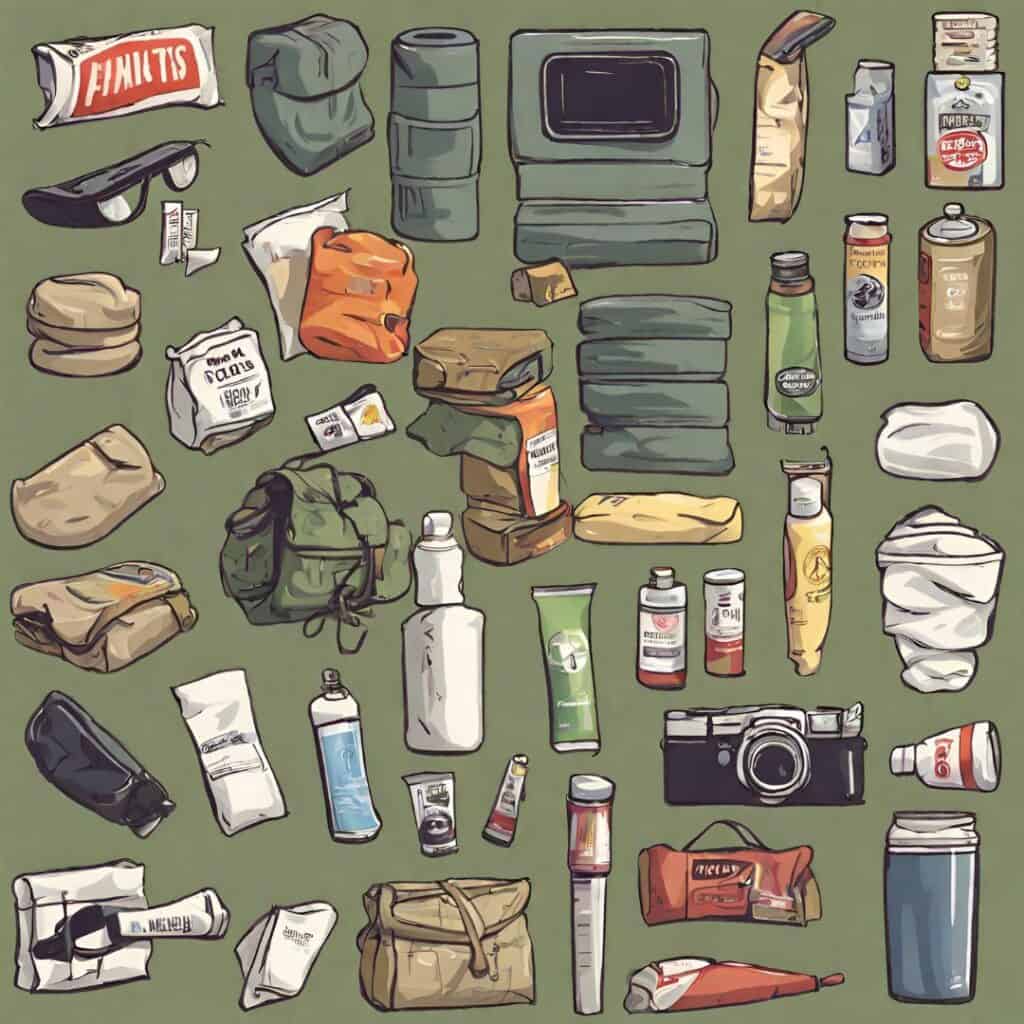
Class VII – Major End Items
This Army Class 7 supply list includes large equipment (humvees, tanks, artillery guns, trucks, aircraft, Bradley fighting vehicles, and M-1 Abrams). These are your costly items.
- Humvees
- Tanks
- Artillery Guns
- Trucks
- Aircrafts
- Bradley Fighting Vehicles
- M-1 Abrams
Humvees: These versatile military vehicles serve critical roles in transportation and reconnaissance, providing mobility and agility on various terrains.
Tanks: Armored combat vehicles, renowned for their firepower and protection, play a pivotal role in ground warfare, ensuring battlefield dominance.
Artillery Guns: These heavy firearms are designed for long-range bombardment and providing vital support to ground forces during combat.
Trucks: Utility vehicles are the logistical backbone, facilitating the transportation of troops, supplies, and equipment in diverse operational environments.
Aircraft: The diverse range of aircraft, including helicopters and fixed-wing planes, serve as vital assets for air support, reconnaissance, and troop transportation, enabling tactical versatility.
Bradley Fighting Vehicles: These armored infantry fighting vehicles are equipped with weaponry, enhancing the mobility and firepower of infantry units during ground operations.
M-1 Abrams: Renowned as the main battle tank, M-1 Abrams are revered for their exceptional firepower and armor, making them indispensable in ground combat scenarios, ensuring battlefield superiority.
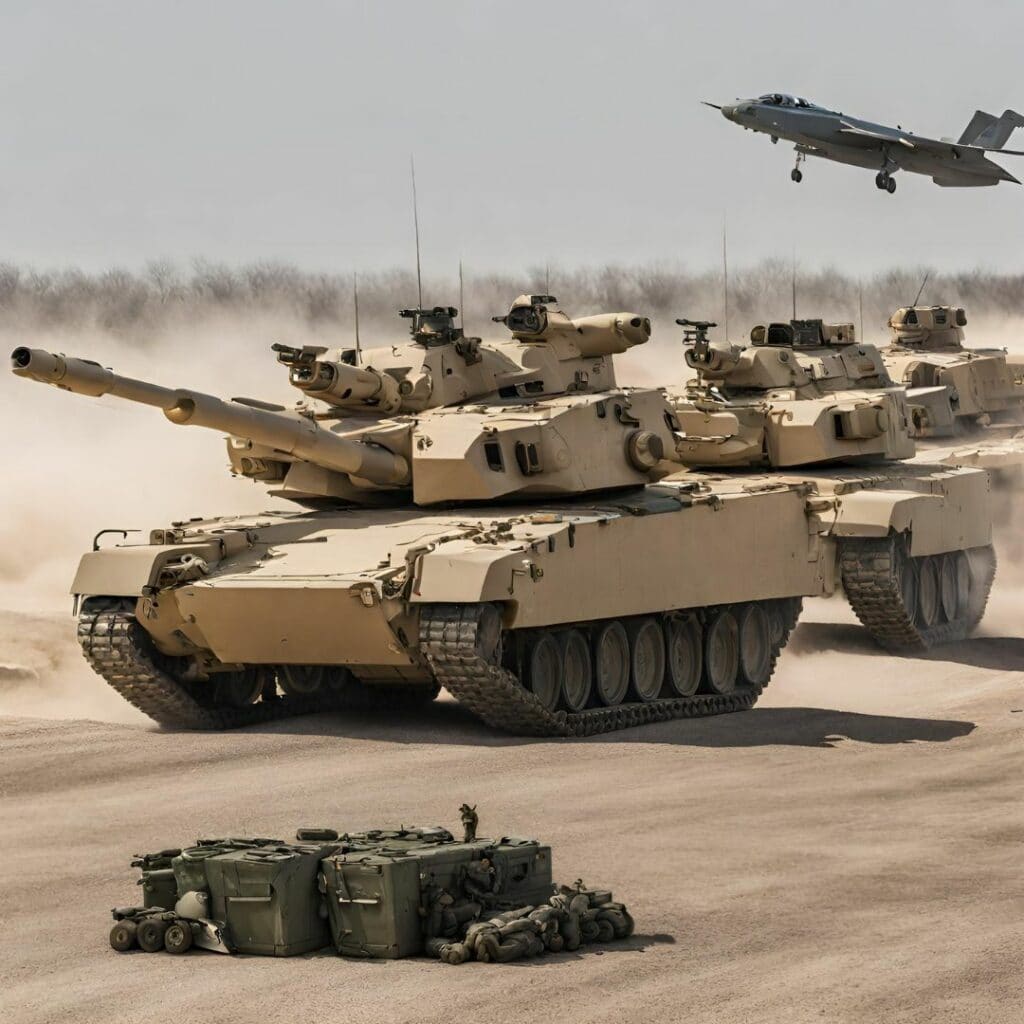
Class VIII – Medical Supplies and Equipment
The Army Class 8 supply list includes critical medical materials essential for healthcare and medical support in military operations, including bandages, medications, tubes, syringes, medical devices, and more.
- Bandages
- Medications
- Tubes
- Syringes
- Medical devices
- IVs
- Needles
- Swabs
There is also a Class 8 Alpha and a Class 8 Bravo, which can include blood, plasma, and things of that nature.
Class 8 Alpha: This includes items like blood, plasma, and other blood-related supplies vital for transfusions and treating severe injuries.
Class 8 Bravo: This category may include specialized medical materials and equipment needed for advanced medical procedures and emergency care in the field.
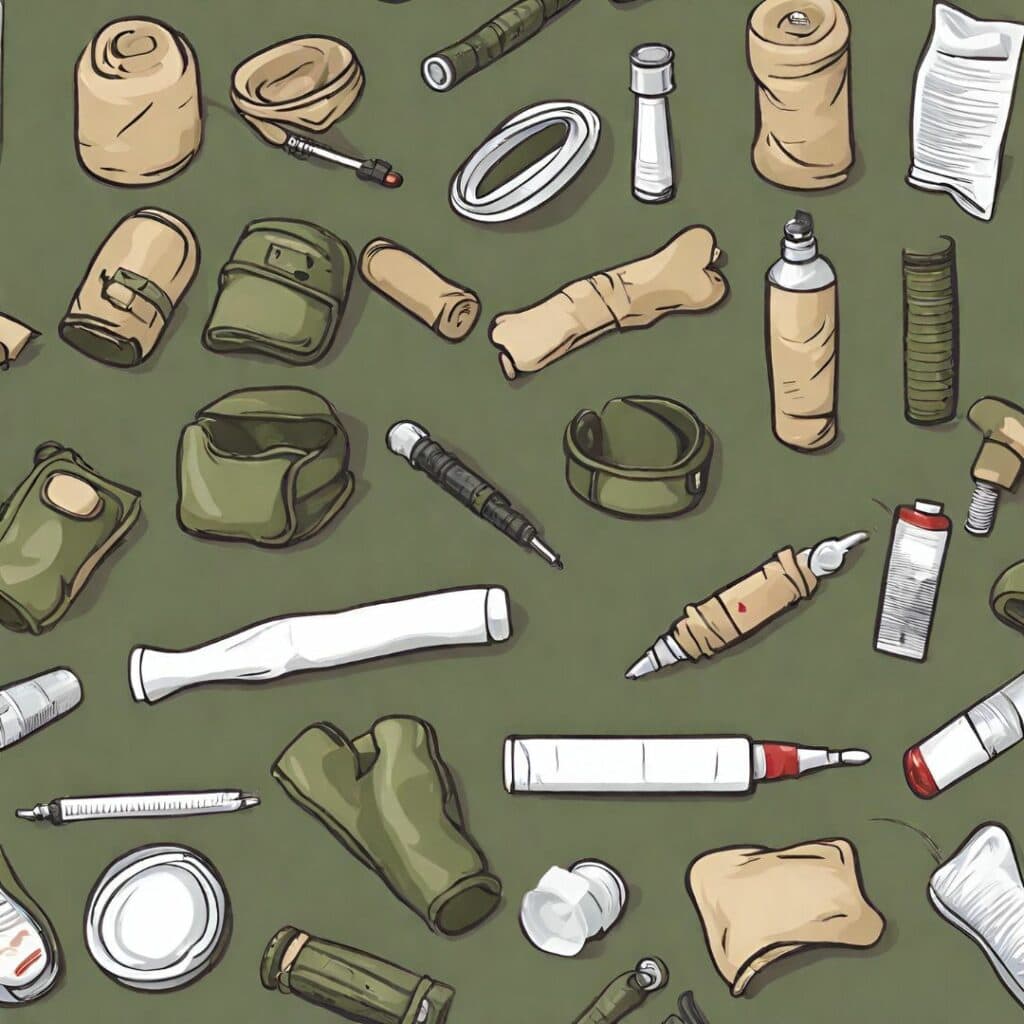
Class IX – Repair Parts and Components
This Army Class 9 supply list includes spare parts and equipment needed to repair and maintain military vehicles (engines, tires, mirrors, radios, etc.), weapons, and other essential equipment used in the military.
- Engines
- Tires
- Mirrors
- Radios
- Spare parts for military vehicles
- Spare parts for weapons
- Spare parts for other essential military equipment
Army Class 9 items include a wide range of items essential for the repair and maintenance of:
Military Vehicles: This category comprises spare parts for engines, tires, mirrors, and communication equipment like radios. These components are vital for keeping military vehicles, including armored vehicles, trucks, and other specialized transport, in working order.
Weapons: The Class 9 supply list also covers spare parts and components needed for the upkeep of firearms, artillery, and other weapons systems.
Other Essential Equipment: Beyond vehicles and weapons, this category extends to various essential military equipment. This can include spare parts and components for communication devices, surveillance equipment, protective gear, and more.
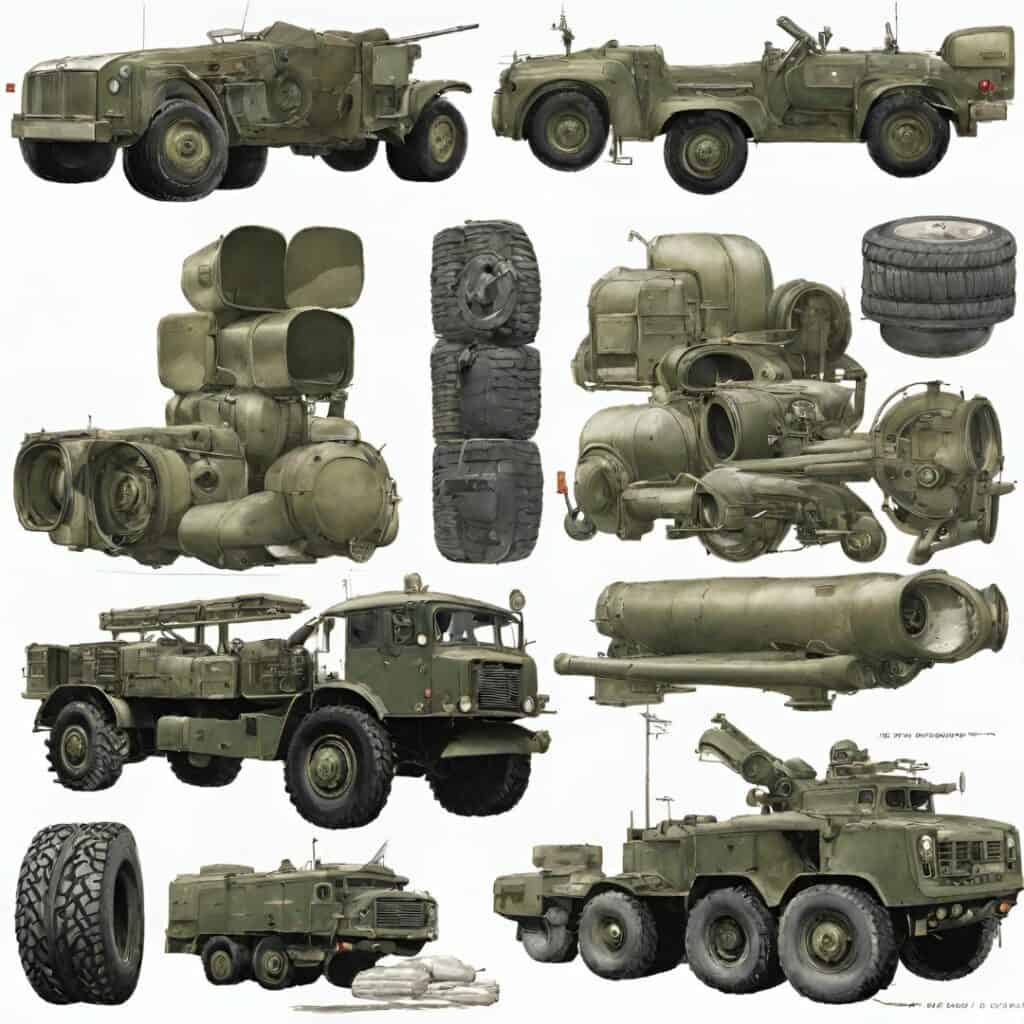
Class X – Miscellaneous Supplies
This Army Class 10 supply list includes items not included in any other class of supply (1 to 9). This category typically includes materials and items used in non-military operations or humanitarian assistance efforts
- Humanitarian Aid Supplies
- Non-Standard Equipment
- Cultural and Religious Items
- Non-Military Vehicles
- Construction and Infrastructure Materials
- Educational Materials
- Medical Equipment
- Agricultural Supplies
- Miscellaneous Items
Humanitarian Aid Supplies: Food, clean water, clothing, blankets, and medical supplies provided during disaster relief or humanitarian missions.
Non-Standard Equipment: Specialized tools or equipment required for unique tasks that are not part of regular military operations.
Cultural and Religious Items: Materials needed for interactions with local populations during peacekeeping or humanitarian efforts, such as language translation books or religious texts.
Non-Military Vehicles: Vehicles used for humanitarian purposes, such as ambulances, utility trucks, or transport vehicles for delivering aid.
Construction and Infrastructure Materials: Building materials like lumber, cement, and roofing supplies used for humanitarian construction projects in disaster-stricken or impoverished areas.
Educational Materials: School supplies, books, and learning resources provided as part of efforts to support education in underserved regions.
Medical Equipment: Specialized medical devices or equipment used in medical clinics or field hospitals during humanitarian missions.
Agricultural Supplies: Seeds, fertilizers, and farming equipment provided to assist communities in agricultural development and food security.
Miscellaneous Items: Any other materials or items that do not fit into the standard military supply categories but are essential for specific non-military or humanitarian missions.
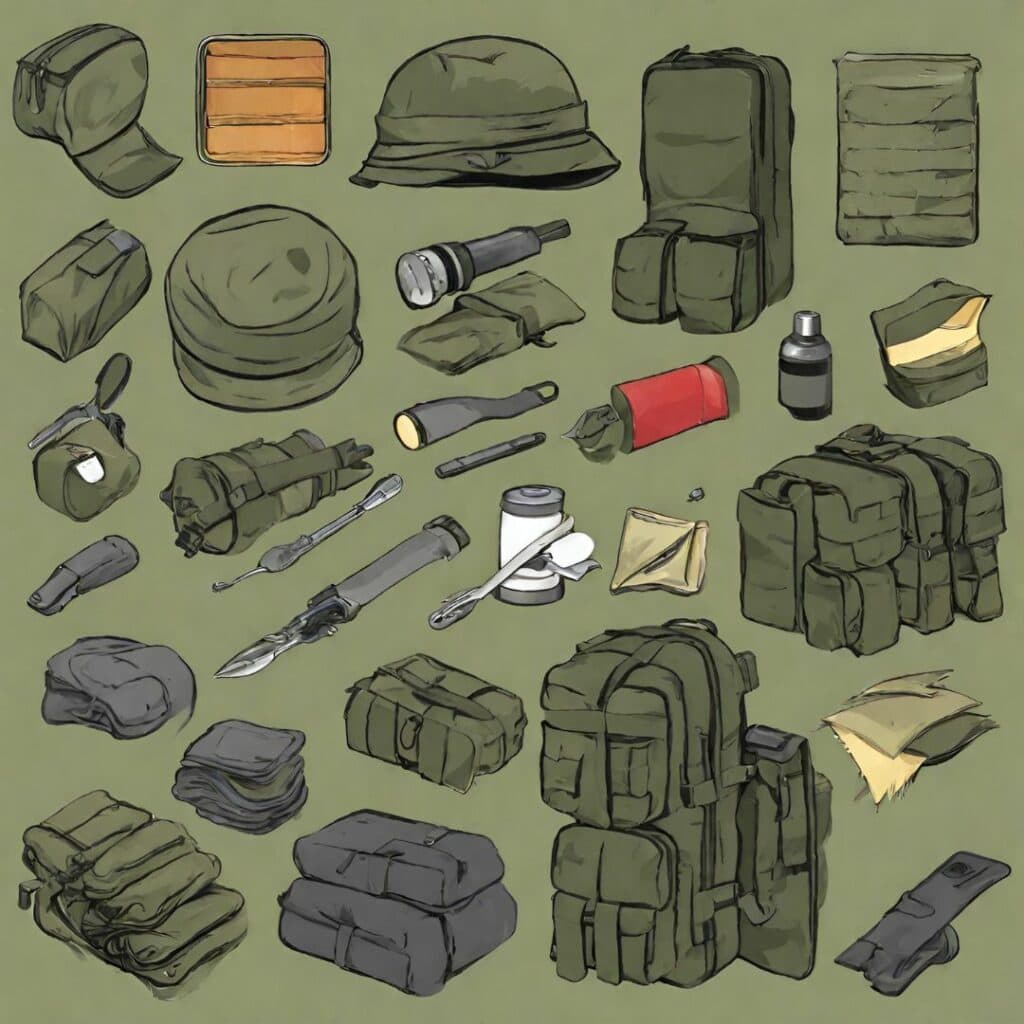
Customize Military Coins: Customize military challenge coins for soldiers who have trained hard. Challenge coins are a symbol of honor and recognition. You can customize your challenge coins by uploading pictures with military elements on GS-JJ. These military coins are high quality and durable. Giving them to these outstanding and brave soldiers will inspire them to work harder for the country and the people.
10 Army Classes of Supply List 2023
Below is a list of the ten classes of supply in the Army:
| Class of Supply | Category | Spare parts & Materials for repairs |
|---|---|---|
| Class 1 | Subsistence | Food, rations, water |
| Class 2 | Clothing and Equipment | Uniforms, protective gear, tents |
| Class 3 | Petroleum, Oils, and Lubricants | Fuel, lubricants, hydraulic fluids |
| Class 4 | Construction and Barrier Materials | Sandbags, barbed wire, fencing |
| Class 5 | Ammunition | Ammunition (Guns) & Explosives, |
| Class 6 | Personal Demand Items | Spare parts & Materials for repairs |
| Class 7 | Major End Items | Tanks, aircraft, vehicles |
| Class 8 | Medical Supplies and Equipment | Medical materials |
| Class 9 | Repair Parts and Components | Spare parts & Material for repairs |
| Class 10 | Miscellaneous Supplies | Items not included in Class I to X |
Army Class Supply Table
Army Classes of Supply Conclusion
There you have it, soldiers: the ten classes of supply in the Army. If I were to give you some essential tips, I would take time to familiarize myself with each class of supplies.
- Who do you need to reach out to request suppliers?
- Do you need to go to your supply sergeant’s S4, the supply support activity?
- What’s the requisitioning process?
- Do you have enough supplies on hand?
- How do you do your inventories? Things of that nature.
These are the ten classes of supply. This is the cheat sheet for small unit leaders about the ten classes of supply. I hope you got some value from this post.
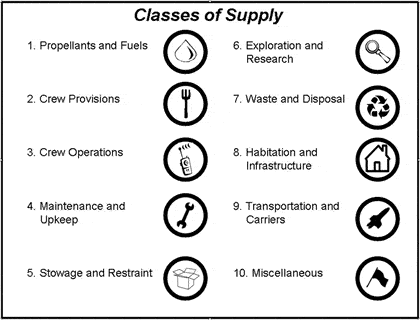
- Empowering Transactions: Navigating Firearms Sales with Proper Documentation - April 8, 2024
- Army PRT – Preparation and Recovery 2024 - March 18, 2024
- Active and Reserve Components 2024 - March 6, 2024
